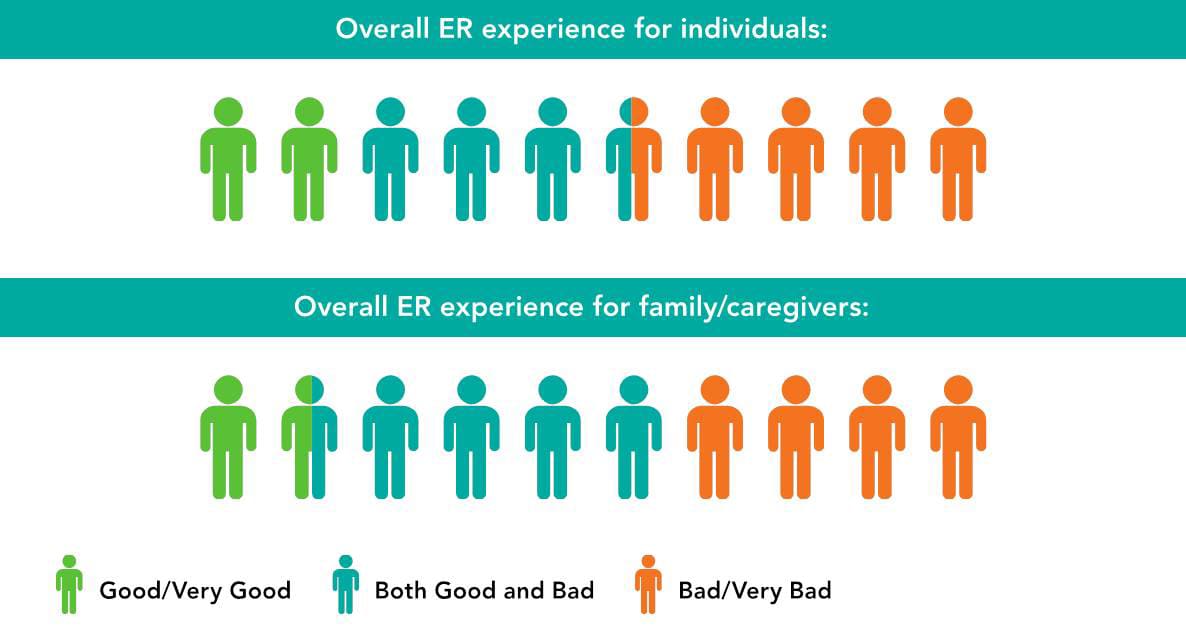June 05, 2015
By Colleen Duewel

“The nurses and doctor I came into contact with were not sympathetic to my mental health crisis and did nothing to ease my anxiety or fears instead threatening me to do as I was told or I would be restrained.” – Emergency Room psychiatric patient.
The Agency for Healthcare Research and Quality reported that mental health and substance abuse cases accounted for 1 in 8 Emergency Room (ER) visits in the United States in 2010. However, ER nurses and doctors have less training in psychiatric emergencies than they do in broken legs and chest pain. In the ER an individual in distress often experiences a long wait time without mental health treatment. One person said, "[sitting in] the waiting area when you are in crisis is the most difficult part. Until you are taken back to a room, it can be very difficult to cope with all of the things happening [around you].”
In the fall of 2014, NAMI released a survey asking families and individuals who had a psychiatric emergency to share their experiences from the ER. With over 1,000 individuals responding, 2 out of 5 rated their experience as “Bad” or “Very Bad.” Regardless of things like race, household salary and education level, the survey showed the following four factors from staff treatment influenced a positive experience:
Of the 1,400 family members surveyed, the consensus was similar. They were concerned about staff communication, access to extra resources and wait times. One family member noted that staff should, “Keep [the family] in the loop. Assume they should be in the loop as you would assume a family would be involved with a broken leg. Unless [the] patient requests they not be involved, or red flags indicate otherwise, the family should [be involved] and hear [the] treatment plan etc. first hand.”
With individuals and families, perceived shaming of mental illness and low levels of respect were predictors of negative experiences. One person reported in the survey that, “I felt like I was criminal. There were guards around me that did not talk to me at all…I was made to feel as if I had done something wrong.” For the 22% of people who reported positive experiences, the staff’s ability to communicate and listen to individual concerns were important factors.
According the Emergency Nurses Association, the factors that lower the quality of health care in these situations include a lack of consistent guidelines and training. Programs like “Friends in the Lobby” and “NAMI in the Lobby” in Minnesota and San Diego are pioneering the way in providing better post-ER resources. NAMI has jump-started efforts to educate staff at various hospitals.
Together with the Hospital Corporation of America, NAMI created a Competent Caring training video to show the impact that compassionate, patient-centered care on the patient experience. Additional tools for nurses and doctors include pocket cards with guidelines for patient-centered care, in-service training outlines and Emergency Psychiatric Care conference presentations.
NAMI continues to work at improving the experience of people who go through a mental health emergency. Ultimately, the goal is for everyone having a crisis to have the experience of staff inclusion with questions, compassionate treatment, with a balance between handling the emergency and catering to caregivers.
We’re always accepting submissions to the NAMI Blog! We feature the latest research, stories of recovery, ways to end stigma and strategies for living well with mental illness. Most importantly: We feature your voices.
LEARN MORENAMI HelpLine is available M-F, 10 a.m. – 10 p.m. ET. Call 800-950-6264,
text “NAMI” to 62640, or email. In a crisis, call or text 988 (24/7).